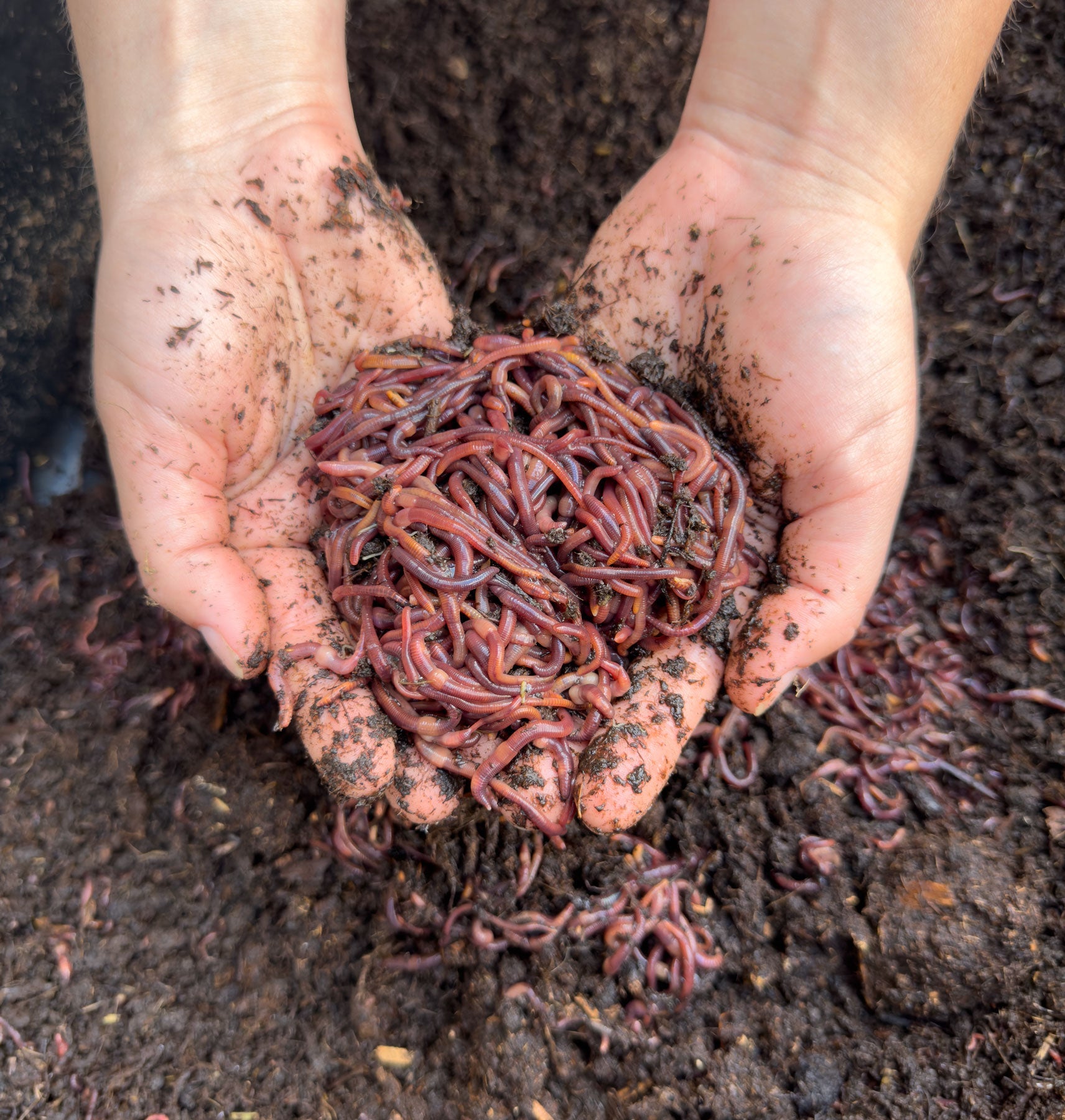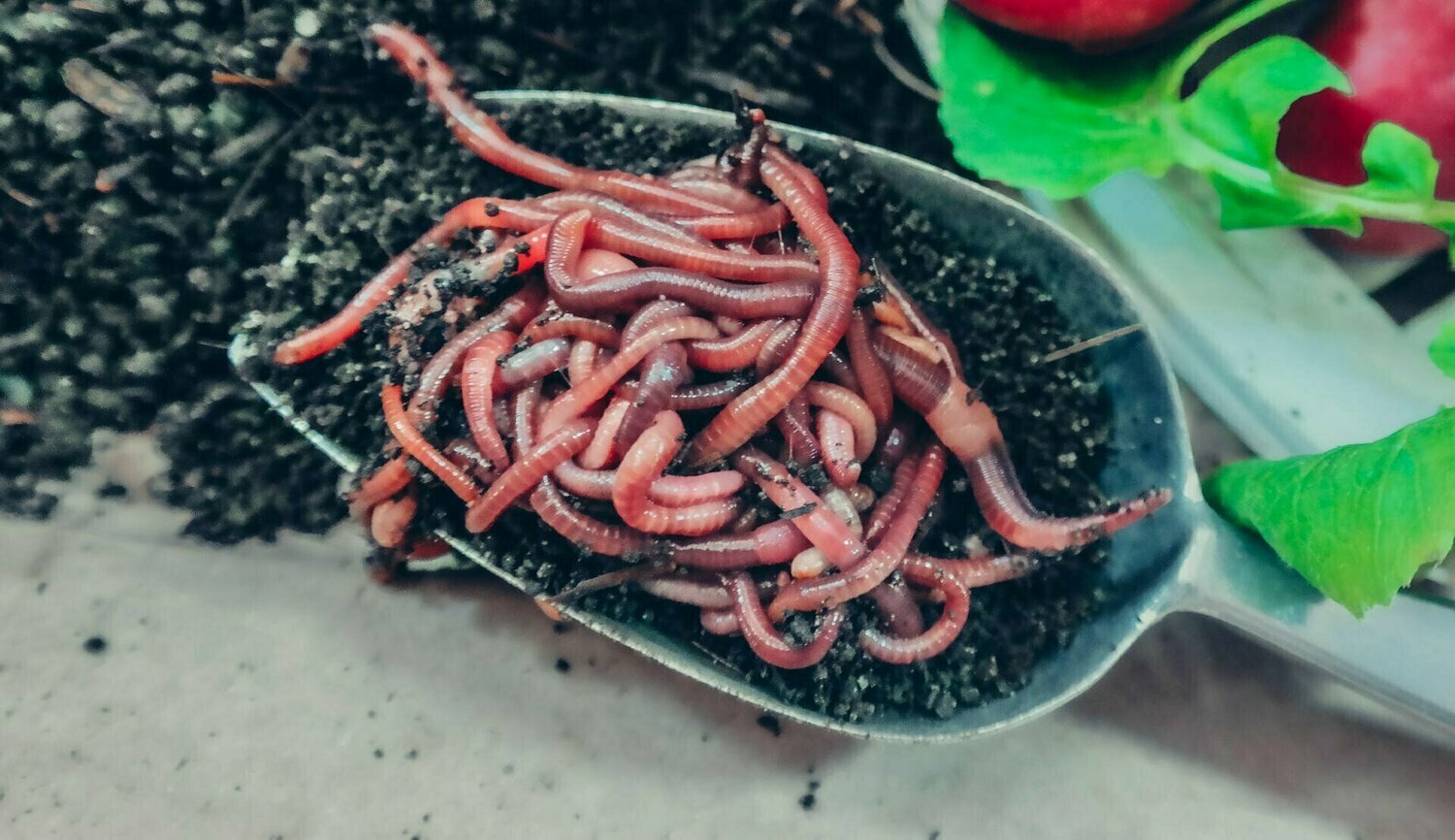The Role of Red Wigglers in Sustainable Gardening
The integration of red wigglers right into lasting gardening practices provides a compelling method to boosting soil wellness and lowering organic waste. The effects of utilizing red wigglers prolong beyond plain composting; their role in shaping a much more lasting future warrants a much deeper exploration of their advantages and practical applications.
Comprehending Red Wigglers
Red wigglers, scientifically understood as Eisenia fetida, are a varieties of earthworm renowned for their role in lasting gardening and composting techniques - red wigglers. These worms flourish in breaking down raw material, making them specifically effective in transforming kitchen area scraps and backyard waste right into nutrient-rich compost. Unlike conventional earthworms, red wigglers have a greater resistance for varying wetness degrees and can flourish in settings with abundant organic product
(red wigglers)Typically, red wigglers are smaller sized than their earthworm counterparts, typically gauging between 3 to 4 inches in size. They possess a reddish-brown pigmentation and have a segmented body structure that helps in their burrowing and feeding tasks. These microorganisms are hermaphroditic, implying each individual possesses both male and female reproductive body organs, which enables effective population development under optimal problems.
The environment choices of red wigglers consist of damp, dark settings rich in organic material, such as compost bins or worm ranches. Their ecological function extends beyond composting; they are important in aerating the dirt and facilitating nutrient cycling, which inevitably adds to much healthier garden ecological communities. red wigglers. Understanding the biology and behavior of red wigglers is essential for those looking for to execute effective vermicomposting in lasting horticulture
Benefits of Vermicomposting
Vermicomposting offers various benefits that enhance sustainable gardening techniques and add to environmental wellness. Among the primary advantages is the change of natural waste into nutrient-rich compost, which improves soil framework and fertility. The spreadings produced by red wigglers are loaded with helpful microbes and crucial nutrients, making them a superb natural fertilizer.
Additionally, vermicomposting significantly lowers land fill waste. By diverting cooking area scraps and yard waste from landfills, this method not just lessens methane discharges-- a powerful greenhouse gas-- however also advertises a round economy, where waste is repurposed as a resource.
An additional advantage is the enhancement of soil aeration and water drainage (red wigglers). The burrowing task of red wigglers develops networks in the soil, permitting air and water to permeate even more easily, hence promoting a healthier origin system for plants
Moreover, vermicomposting can be done on a tiny scale, making it available for city garden enthusiasts and those with limited area. This approach motivates ecological stewardship and understanding, as individuals end up being much more involved with their waste management methods. Eventually, vermicomposting stands for a sustainable, effective, and green method to gardening that profits both plants and the earth.
Exactly How to Begin Vermicomposting
Starting your very own vermicomposting system can be a satisfying undertaking that improves your lasting horticulture techniques. To begin, select a suitable container, such as a plastic bin or wooden box, with excellent water drainage and ventilation. The size will certainly rely on the quantity of kitchen scraps you create; a container of 10-14 gallons commonly is adequate for a household.
Following, prepare the bed linen product. Shredded newspaper, cardboard, and coconut coir are exceptional alternatives, offering a comfy habitat for the red wigglers. Aim for a bed linen depth of concerning 4-6 inches, which must be wet but not soaked.
When the bed linens is developed, introduce your worms. Red wigglers (Eisenia fetida) are the most suitable for composting. Start with about one pound of worms for every single 2-3 extra pounds of cooking area scraps weekly.
Begin adding kitchen waste, avoiding meat, dairy, and oily foods, as these can attract parasites and produce odors. Frequently monitor the container's moisture levels and temperature level, ensuring it remains within the suitable range for worm activity. With these first steps, you'll be well on your method to producing nutrient-rich compost for your garden.
Preserving a Healthy And Balanced Worm Container
A flourishing worm bin calls for consistent care and focus to keep an optimum setting for the red wigglers. Key variables to keep track of consist of moisture levels, temperature, and food supply. Maintaining a dampness level akin to a wrung-out sponge is important; way too much water can lead to anaerobic problems, while insufficient can dry out the worms.
Temperature is likewise essential, as red wigglers flourish in a series of 55 to 77 degrees Fahrenheit. Severe temperatures can worry the worms, possibly causing death. Placing the bin in a climate-controlled area or using insulating products can assist control temperature variations.

Lastly, aeration is essential. Regularly transforming the bed linens and utilizing a fork or shovel can stop compaction and advertise airflow, making sure a healthy and balanced, growing environment for the red wigglers. By sticking to these techniques, gardeners can maintain an efficient worm bin that sustains sustainable gardening efforts.
Influence On Dirt Health And Wellness
Enhancing soil wellness via the usage of red wigglers is a fundamental element of lasting horticulture. By eating organic issue, red wigglers damage down complicated materials into easier compounds, a process known as vermicomposting.

(red wiggler worms for sale near me)Researches have shown that dirts enhanced with worm spreadings show increased microbial task and improved fertility, causing higher crop yields. By including red wigglers right into horticulture methods, garden enthusiasts not only enrich their dirt however also add to a much more sustainable farming system, highlighting the interconnectedness of soil health and environmental stewardship.

Final Thought
In verdict, red wigglers significantly contribute to sustainable horticulture with their effective vermicomposting techniques. By advertising waste decrease and cultivating a circular economic climate, red wigglers emerge as vital elements in environment-friendly horticulture efforts, emphasizing their crucial duty in environmental sustainability.
 Ben Savage Then & Now!
Ben Savage Then & Now! Heath Ledger Then & Now!
Heath Ledger Then & Now! Kenan Thompson Then & Now!
Kenan Thompson Then & Now! Matilda Ledger Then & Now!
Matilda Ledger Then & Now! Kerri Strug Then & Now!
Kerri Strug Then & Now!